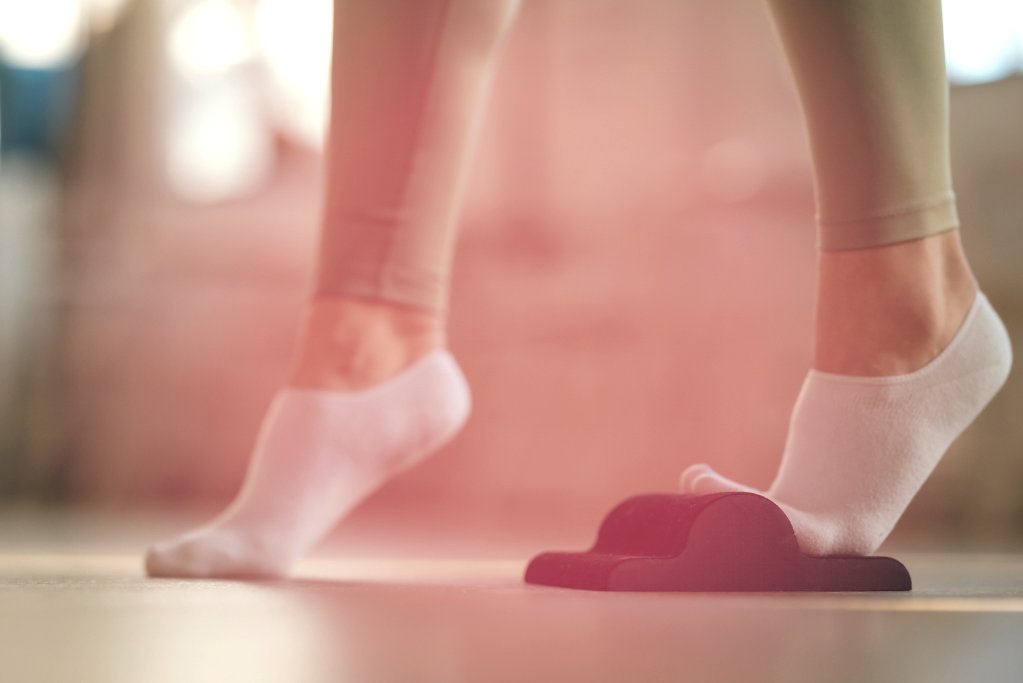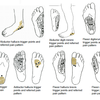5 EXERCISES TO MANAGE PLANTAR FASCITIS AT HOME

The plantar fascia (aponeurosis), a dense band of connective tissue located on the underside of the foot, serves to reinforce the arch and absorb the weight-bearing forces on the foot. When this area becomes inflamed, typically due to overuse, resulting from repetitive stress and the formation of micro-tears, it leads to a condition known as plantar fasciitis. It commonly manifests as a sharp pain occurring on the medial plantar side of the heel, which becomes more evident in the morning or following periods of rest.
Risk factors include:
- Sports and activities abundant in walking, running, and/or jumping
- Obesity
- Limited ankle dorsiflexion
- Tightness or weakness of calf and foot intrinsic muscles
- “Flat feet” or high arch (Pes cavus and planus deformities)
- Inappropriate footwear
- Overpronation dynamically
Treatment typically involves conservative anti-inflammatory methods, such as rest, ice, and pain relief techniques. If necessary, more invasive procedures like corticosteroid injections, PRP, needling, iontophoresis, or fasciotomy might be recommended. When pain diminishes or is absent, it's advisable to focus on relaxation, stretching, and strengthening the affected area. Utilizing appropriate equipment and engaging in specific exercises for the foot, ankle, and lower leg is important and necessary part of returning to everyday activities and especially sports. For the better part of the fasciitis rehabilitation, you don’t need any “special” or expensive equipment and can also be performed in the comfort of your own home. Here are a few exercises, that are an essential part of a second phase of reconditioning of the plantar region:
Start with bringing awareness in the foot by revival the receptors on the underside and preparing the foot for further exercises. Don’t overthink here and just start working on your sole with pressing down on the ball, rolling it around and just do what feels good. You can use a ball hardness of your choosing and when you feel comfortable focus pressure (and release) on areas under each toe, then moving toward heel, with movement especially on the lateral and medial side of the transverse arch and through longitudinal arch. Continue on the heel and then finish this – let’s say warmup – exercise on the plantar spots you feel need most work done.
There is a functional link between Achilles tendon and plantar fascia and this interconnection supports the idea of easing fascia conditions through calf stretching and strengthening exercises. Stretch you calf muscles with both extended and flexed knee variations (while knee is extended this stretch is targeting your gastrocnemius muscle and with flexion in the knee you are focusing your stretch on underlying soleus muscle). When aiming to address tightness or issues in the entire calf complex, incorporating both stretches into your routine can provide best result in overall flexibility of the area. Do these exercises standing up and leaning against the wall, hold positions for around 30 seconds and then switch. After doing holding positions, do the same exercises dynamically, with 10 repetitions per exercise.
Sitting foot stretch – sit down and cross one foot over the other leg. Grab your toes and gently pull them toward you, feeling a stretch along the foot (from your toes and into your heel). Hold for 30 seconds and then switch to the other foot. After doing holding positions, do the same exercises dynamically and start moving your toes the same way – after 15 seconds gently turn your heel away from you and draw forefoot toward you – move around in the same fashion for another 15 seconds and then switch foot.
Tailor the exercise to your metatarsal joint range of motion: utilize flat ground if there are limitations, or, if there are no joint restrictions, put a towel or specialised equipment, such as Curve, as support under your toes. It is important to have the ball of the foot on the floor, and only toes on the wedge (towel, Curve). This will increase the amount of dorsiflexion and help target your plantar fascia when performing exercise. Begin with split stance position and perform a step forward with a foot you are not targeting. Your other foot should “stay behind” with your toes on the ground (or on the wedge) while you lift your heel and mid foot. Try to keep the head of the first metatarsal on the floor and create extension at the toe. Repeat 10 times and then switch foot.
Exercise involving toe grabs focus on strengthening the intrinsic muscles of the foot (on the sole). Place a towel on the floor and while sitting down use your toes to scrunch up the towel toward you, release, and then repeat a few times. Once this exercise feels less challenging, you can add an object onto the towel to increase the difficulty level.
-
Posted in
PLANTAR FASCITIS




